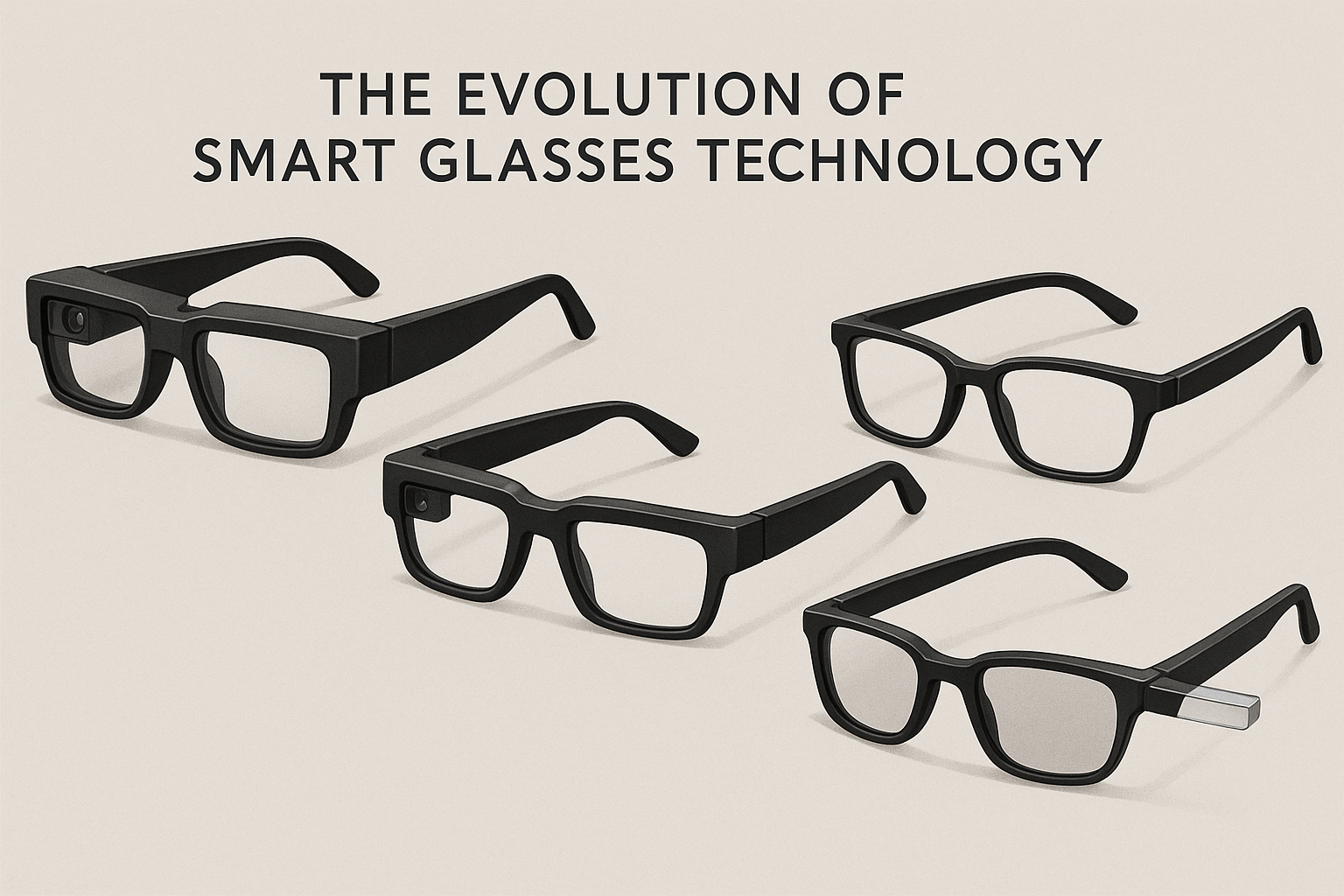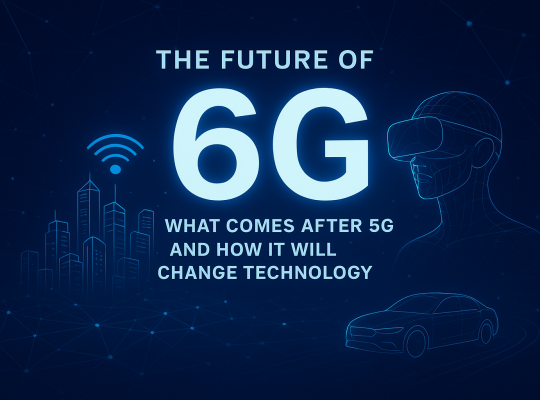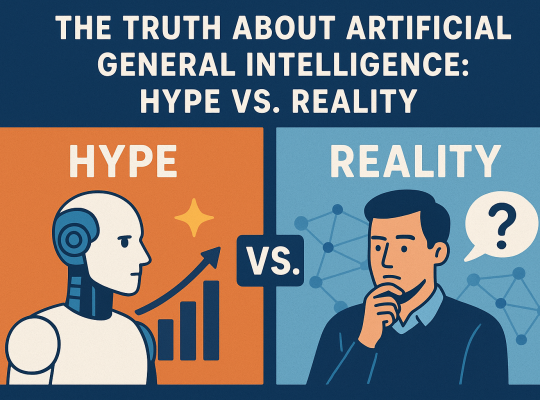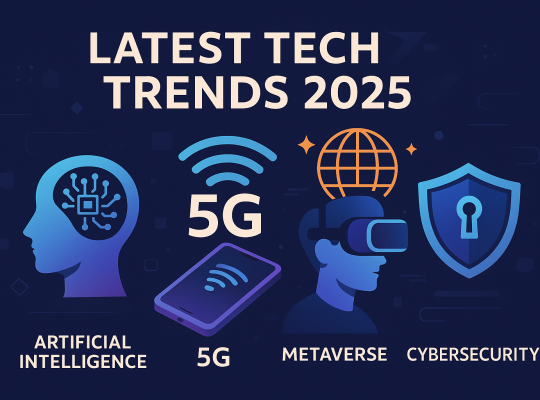In an era where technology is seamlessly woven into the fabric of our daily lives, smart glasses are emerging as a groundbreaking innovation that is reshaping our perception of reality. Imagine a world where digital information enhances your surroundings, seamlessly blending the virtual with the physical. These futuristic devices are no longer mere concepts; they are revolutionizing how we interact, learn, and experience our environment. From augmented reality applications that superimpose helpful data onto the real world to immersive experiences that transport us beyond the ordinary, smart glasses are redefining what it means to “see” the world. Join us as we explore the fascinating evolution of smart eyewear and uncover how these devices are not just changing our view but also transforming our very existence. The future of vision is here, and it promises to deliver a richer, more connected experience than ever before.
The Evolution of Smart Glasses Technology
The journey of smart glasses technology is a fascinating tale of innovation and evolution. The concept of wearable technology has been around for decades, with early attempts like the bulky, impractical digital glasses of the 1980s and 90s. These initial prototypes were more akin to science fiction props than practical devices. However, they laid the groundwork for what was to come. As technology advanced, so did the ambition to create truly smart eyewear that could seamlessly integrate digital information with the physical world.
The real breakthrough came in the early 2010s when major tech companies started to invest heavily in the development of smart glasses. Google Glass, launched in 2013, was a pivotal moment in this evolution. Despite its mixed reception and eventual withdrawal from the consumer market, Google Glass showcased the potential of augmented reality (AR) and wearable tech. It featured a head-mounted display and voice-activated controls, allowing users to access information hands-free. This marked a significant leap forward from earlier models and set the stage for further innovations.
Since then, the field has exploded with advancements. Companies like Microsoft, Apple, and various startups have been pushing the boundaries of what smart glasses can do. Modern smart glasses are sleek, lightweight, and packed with powerful features that were unimaginable just a few years ago. They incorporate advanced AR capabilities, high-definition cameras, voice recognition, and even artificial intelligence. These developments have transformed smart glasses from niche gadgets into versatile tools that are poised to revolutionize numerous aspects of our lives.
Key Features and Functionalities of Smart Glasses
Smart glasses today are equipped with a myriad of features that make them incredibly versatile and useful. One of the most significant functionalities is augmented reality (AR), which overlays digital information onto the real world. This can range from simple notifications and directions to complex interactive displays that respond to the environment. AR in smart glasses allows users to access information in a contextually relevant manner, enhancing their interaction with the world around them.
Another critical feature of modern smart glasses is their ability to connect seamlessly with other devices. Through Bluetooth and Wi-Fi connectivity, smart glasses can sync with smartphones, tablets, and computers, allowing for an integrated digital experience. This connectivity enables features like hands-free calling, messaging, and even navigation. The convenience of having essential functionalities readily accessible without having to reach for another device cannot be understated.
Voice recognition and control are also central to the functionality of smart glasses. With built-in microphones and sophisticated voice processing algorithms, users can interact with their glasses using simple voice commands. This not only makes the device more user-friendly but also opens up possibilities for accessibility, making technology more inclusive for people with disabilities. Additionally, smart glasses often include high-definition cameras for capturing photos and videos, further expanding their utility for both personal and professional use.
How Smart Glasses Enhance Augmented Reality Experiences
The integration of augmented reality in smart glasses is arguably one of the most exciting aspects of this technology. AR transforms the way we perceive and interact with the world by overlaying digital content onto our physical surroundings. Smart glasses bring AR experiences to life in a way that is immersive and intuitive. For example, navigation becomes a seamless experience with directions displayed directly in the user’s field of vision. This can be particularly useful in unfamiliar environments or while driving, where quick and easy access to information is crucial.
Educational applications of AR in smart glasses are also profound. Imagine students learning about historical events through interactive 3D models superimposed onto their real-world surroundings. Museums and educational institutions are already exploring ways to enhance their exhibits with AR, providing visitors with rich, engaging experiences that go beyond static displays. This blend of physical and digital learning can make education more dynamic and accessible.
Moreover, AR in smart glasses has transformative potential in professional settings. Architects and engineers can use AR to visualize projects in real-time, overlaying blueprints and 3D models onto construction sites. Healthcare professionals can benefit from AR-enhanced glasses for complex procedures, displaying vital information and instructions without taking their eyes off the patient. These applications not only improve efficiency but also enhance the precision and quality of work across various industries.
Applications of Smart Glasses in Various Industries
Smart glasses are making significant inroads into various industries, transforming traditional processes and opening up new possibilities. In the healthcare sector, smart glasses are revolutionizing patient care and medical training. Surgeons can use AR-enhanced glasses to access patient records, visualize anatomy, and receive guidance during complex procedures. This technology can improve accuracy and reduce the risk of errors, ultimately enhancing patient outcomes. Additionally, smart glasses are being used in telemedicine, allowing healthcare providers to consult with patients remotely while having access to real-time data and diagnostics.
The manufacturing and logistics industries are also benefiting from the adoption of smart glasses. Workers can use AR to receive step-by-step instructions for assembling products, reducing the need for bulky manuals and improving efficiency. Smart glasses can facilitate inventory management, displaying information about stock levels and locations directly in the worker’s field of vision. This can streamline operations and reduce downtime, leading to increased productivity and cost savings.
In the retail sector, smart glasses are enhancing the shopping experience for both customers and employees. Sales associates can use AR to access product information, check inventory, and provide personalized recommendations to customers. Shoppers can benefit from AR-enhanced navigation within stores, locating products quickly and efficiently. Furthermore, smart glasses can enable virtual try-ons, allowing customers to see how items like clothing and accessories would look on them without physically trying them on. This can enhance the shopping experience and drive sales.
The Impact of Smart Glasses on Daily Life
Smart glasses are poised to have a profound impact on our daily lives, changing the way we interact with technology and our environment. One of the most significant changes is the shift towards hands-free interaction. With smart glasses, users can access information, communicate, and perform tasks without having to use their hands. This can enhance productivity and convenience, especially in situations where hands-free operation is advantageous, such as cooking, exercising, or driving.
Another area where smart glasses are making a difference is in social interaction. AR-enhanced glasses can provide real-time translations, allowing users to communicate with people who speak different languages. This can break down language barriers and foster global connectivity. Additionally, smart glasses can display social media updates, messages, and notifications in a non-intrusive manner, keeping users connected without the need to constantly check their phones.
Entertainment and leisure activities are also being transformed by smart glasses. AR gaming experiences are becoming more immersive, with digital elements seamlessly integrated into the physical environment. Imagine playing a game where characters and objects appear in your living room, interacting with your surroundings in real-time. This level of immersion can create new forms of entertainment that are more engaging and interactive. Furthermore, smart glasses can enhance travel experiences, providing real-time information about landmarks, directions, and cultural insights, making exploration more enriching and enjoyable.
Challenges and Limitations of Smart Glasses
Despite their promising potential, smart glasses face several challenges and limitations that need to be addressed. One of the primary concerns is the issue of privacy. Smart glasses often include cameras and sensors that can capture and record data, raising concerns about surveillance and data security. Ensuring that user data is protected and that privacy is maintained is crucial for the widespread adoption of this technology. Manufacturers and developers need to implement robust security measures and transparent data policies to address these concerns.
Another challenge is the physical design of smart glasses. While modern models are more sleek and lightweight than their predecessors, they still need to be comfortable and stylish enough for everyday wear. Balancing functionality with aesthetics is a significant hurdle, as users are unlikely to adopt a device that is cumbersome or unattractive. Continuous advancements in design and materials are necessary to create smart glasses that are both practical and appealing.
Battery life is also a limitation that needs to be addressed. Smart glasses require power to operate their various features, and maintaining a long-lasting battery life is essential for usability. Current models may require frequent charging, which can be inconvenient for users. Improving battery efficiency and exploring alternative energy sources are key areas for development. Additionally, the cost of smart glasses can be prohibitive for many consumers. Making the technology more affordable and accessible is crucial for widespread adoption.
Future Trends in Smart Glasses Development
The future of smart glasses holds exciting possibilities, with continuous advancements in technology driving innovation. One of the key trends is the integration of artificial intelligence (AI) into smart glasses. AI can enhance the functionality of smart glasses, providing more intuitive and personalized experiences. For example, AI-powered glasses can learn user preferences and behaviors, offering tailored recommendations and insights. This can make smart glasses more adaptive and responsive, enhancing their utility in daily life.
Another trend is the development of more immersive AR experiences. As technology evolves, AR in smart glasses is becoming more sophisticated, with higher resolution displays and more accurate tracking. This can create richer and more engaging experiences, blurring the lines between the digital and physical worlds. Advances in holographic technology and 3D visualization are also contributing to the development of more immersive AR applications.
Wearable technology is also becoming more interconnected, with smart glasses playing a central role in the ecosystem of connected devices. Integration with smart home systems, fitness trackers, and other wearables can create a seamless and cohesive digital experience. For example, smart glasses can interact with smart home devices to control lighting, temperature, and security systems, providing users with greater control and convenience. The convergence of wearable technology and the Internet of Things (IoT) is poised to create a more interconnected and intelligent environment.
Consumer Perspectives: What Users Are Saying
As smart glasses become more prevalent, user feedback is playing a crucial role in shaping their development. Consumers are expressing excitement about the potential of smart glasses to enhance their daily lives, providing convenience and efficiency. Many users appreciate the hands-free interaction and the ability to access information quickly and easily. The integration of AR is also receiving positive feedback, with users enjoying the immersive and interactive experiences that smart glasses offer.
However, there are also concerns and criticisms from consumers. Privacy issues are a significant concern, with users wary of the data collection capabilities of smart glasses. Ensuring that privacy is maintained and that data is protected is a priority for many users. Additionally, the design and aesthetics of smart glasses are important considerations. Users want devices that are comfortable and stylish, and there is ongoing feedback about the need for improvements in this area.
Battery life and cost are also common points of discussion among consumers. Users are looking for smart glasses that offer long-lasting battery life and are affordable. These factors are crucial for widespread adoption, and manufacturers are continually working to address these concerns. Overall, consumer perspectives are invaluable in guiding the development of smart glasses, ensuring that the technology meets user needs and expectations.
Conclusion: The Future of Vision and Interaction with Smart Glasses
The advent of smart glasses is revolutionizing the way we see and interact with the world. These innovative devices are blending the virtual with the physical, providing immersive and intuitive experiences that enhance our daily lives. From augmented reality applications to hands-free interaction, smart glasses are transforming various industries and opening up new possibilities for education, healthcare, retail, and more.
While there are challenges and limitations to address, the future of smart glasses is filled with exciting potential. Continuous advancements in technology, design, and integration are driving innovation, creating more sophisticated and personalized experiences. As artificial intelligence and wearable technology evolve, smart glasses are becoming more adaptive and interconnected, shaping the future of vision and interaction.
Consumer feedback is playing a crucial role in guiding the development of smart glasses, ensuring that the technology meets user needs and expectations. Privacy, design, battery life, and cost are important considerations that manufacturers are continually working to address. As smart glasses become more prevalent, they promise to deliver a richer, more connected experience than ever before.
The future of vision is here, and smart glasses are at the forefront of this revolution. Embrace the possibilities and explore the transformative potential of smart eyewear. The way we see the world is changing, and it promises to be a journey filled with innovation, excitement, and endless opportunities.









